Bird’s nest anthuriums are some of the most recognizable anthuriums. They vary in size and leaf pattern but share a common growth pattern – rosette-like.
Some can grow to massive sizes, so be wary of which species you decide to grow. You’ll find here a list of the most popular and and some less common bird’s nest anthuriums.
Getting to Know Bird’s Nest Anthurium: A Closer Look
The bird’s nest anthurium, distinct from other anthurium species, grows with tightly clustered leaves in a unique rosette pattern, resembling a bird’s nest.
Bird’s nest anthuriums are epiphytes typically found in low-rainfall areas, yet being tropical plants, they require a lot of water.
To adapt, their funnel-shaped leaves catch and channel water directly to the roots. The plant’s base collects debris, allowing it to create its own compost and gradually release nutrients.
Bird’s nest anthuriums are distinguished from other anthuriums by the unique way their new leaves emerge.
They exhibit involute prefoliation (with the exception of Anthurium hookeri). Involute prefoliation is when a young leaf is rolled inwards along its length, like a rolled-up scroll or tube, as it develops. When the leaf matures and unfolds, it spreads out flat.
Bird’s nest anthuriums have a short base with many roots growing both upwards to retain falling debris used for nutrients, and downwards to anchor to a tree or rock.
Their leaves are usually short-stemmed, thick, and vary in shape to oblong or oval. These leaves are generally larger, wider, and have a leathery texture.
Their ability to hold water and nutrients allows them to thrive in forests with distinct dry periods, especially if they have thick, leathery leaves.
Most of the bird’s nest anthurium belongs to the section Pachyneurium, with some exceptions, which we’ll cover later in the article.
Now, let’s look at some of the most popular bird’s nest anthurium species.
6 Bird’s Nest Anthuriums to Add to Your Collection
Some of these species you definitely heard about, but I bet not all of them.
1. Anthurium Hookeri
While Anthurium hookeri is a type of bird’s nest anthurium, it isn’t the only one. Many nurseries and plant shops mistakenly label all bird’s nest-like anthuriums as Anthurium hookeri.
Anthurium hookeri, a rare species from Panama, differs from most bird’s nest anthurium species in that it doesn’t belong to the Pachyneurium section but rather to the Porphyrochitonium section.
Its leaves display a distinct convolute prefoliation, where the young leaf rolls up with one edge overlapping the other. Additionally, tiny gland dots beneath the leaf surface further distinguish Anthurium hookeri from other bird’s nest anthuriums.
Read next: How to Care for An Anthurium Hookeri
2. Anthurium Superbum
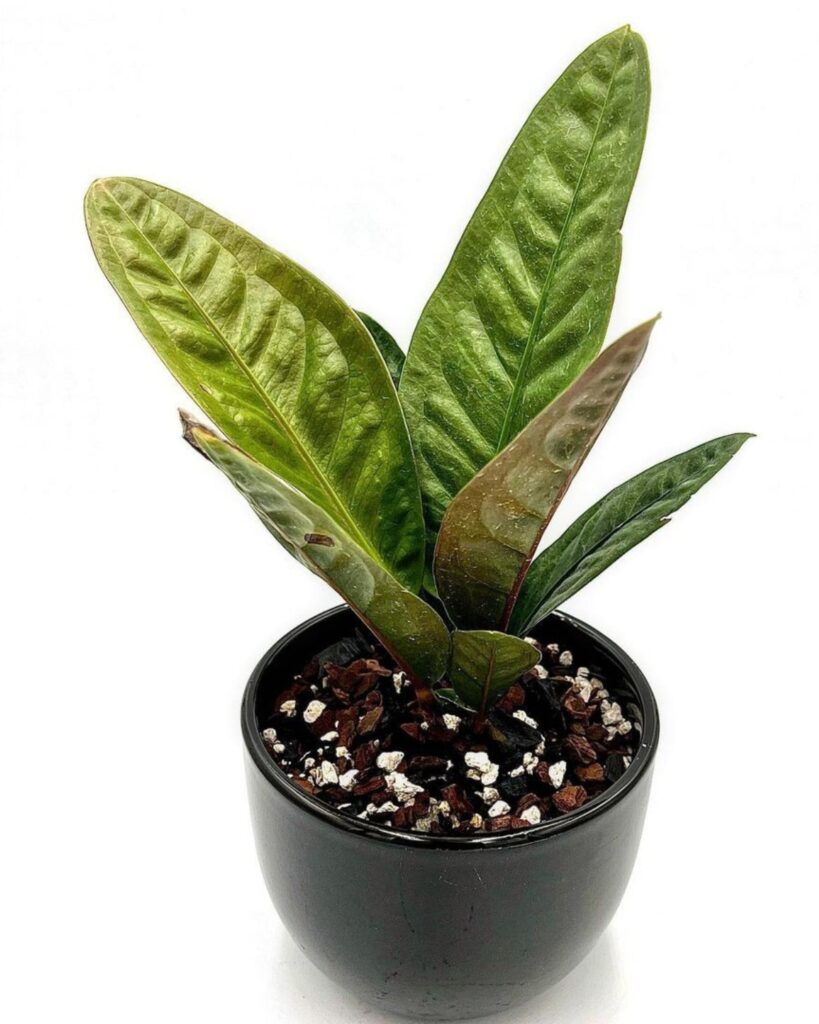
Anthurium superbum is a bird’s nest anthurium found in Ecuador’s tropical moist and wet forests between 180 to 350 meters elevation.
These plants have dark green, upright leaves, often with a red or purple hue underneath, and a short white flower structure. New leaves emerge burgundy or purple in color before turning dark green.
The leaves are leathery and shiny. An interesting feature of this plant is its pinkish roots.
Aroid enthusiasts have cultivated it since the 80s.
3. Anthurium Reflexinervium
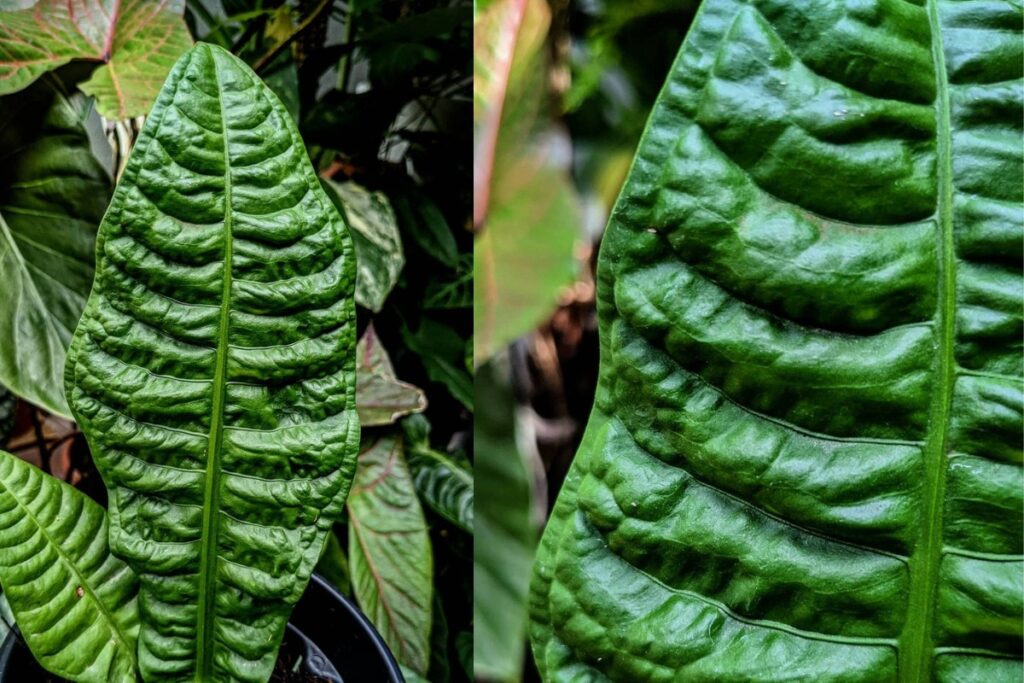
Anthurium reflexinervium is a smaller species of bird’s nest anthurium native to Peru. Its deeply crinkled leaves give it the appearance of a cabbage without a core.
Anthurium reflexinervium is an epilithic plant, which means it naturally grows on the surface of rocks or stones rather than in soil. Limestone is particularly beneficial for these plants. It catches debris and offers numerous rooting sites.
In dry conditions, limestone areas provide a more hospitable environment as they can retain moisture and offer shelter.
4. Anthurium Plowmanii
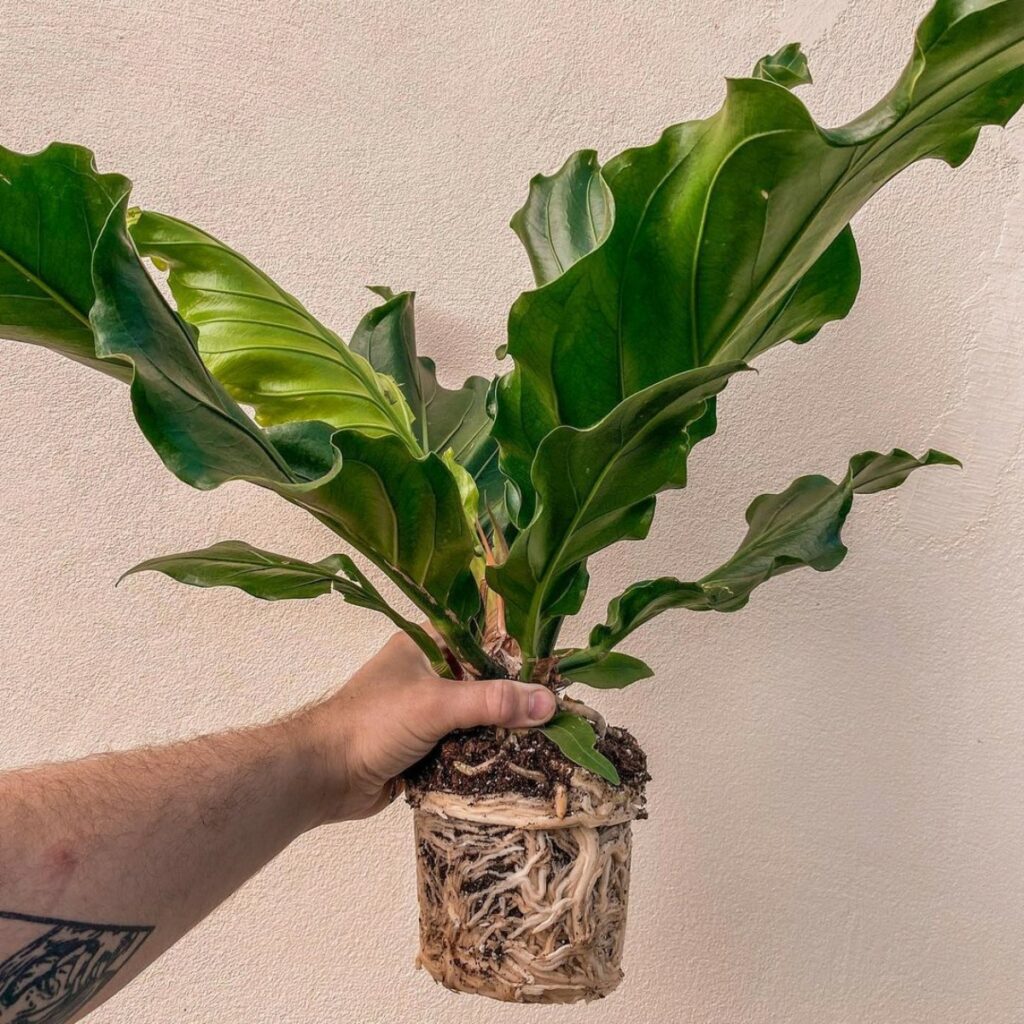
Anthurium plowmanii is found in various regions, from Brazil to Bolivia, Paraguay, and Peru, usually within the 50-900 m elevation range.
It thrives in Peru’s dry forest zones and specific habitats in Brazil. A notable feature of this large epiphytic or epilithic species in the Pachyneurium section is its spadix, which is usually longer than its peduncle, a trait shared only with A. solomonii.
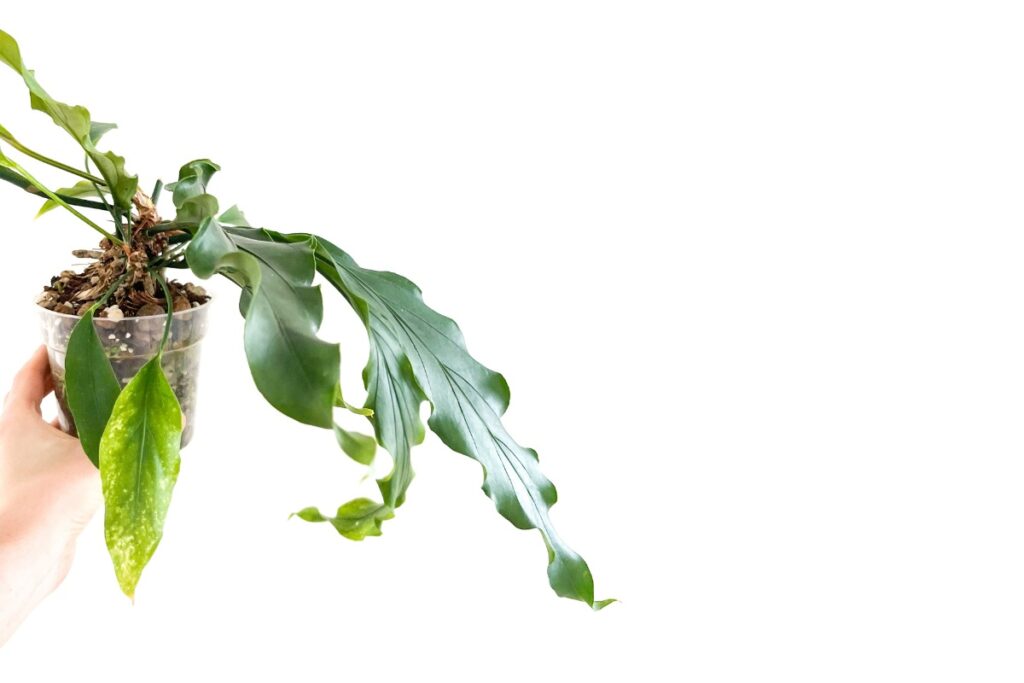
5. Anthurium Crassinervium
Anthurium crassinervium, a bird’s nest anthurium native to parts of Venezuela, and Colombia, grows on trees, bare rocks, or in soil. The plant can reach a height of 6 feet with leaves up to 4.5 feet long.
It constantly produces inflorescences with a green to purple spathe and a dark purple spadix, followed by bright red fruits.
The name “crassinervium” means ‘with large veins’ and refers to its prominent veins underneath the leaves.
6. Anthurium Schlechtendalii
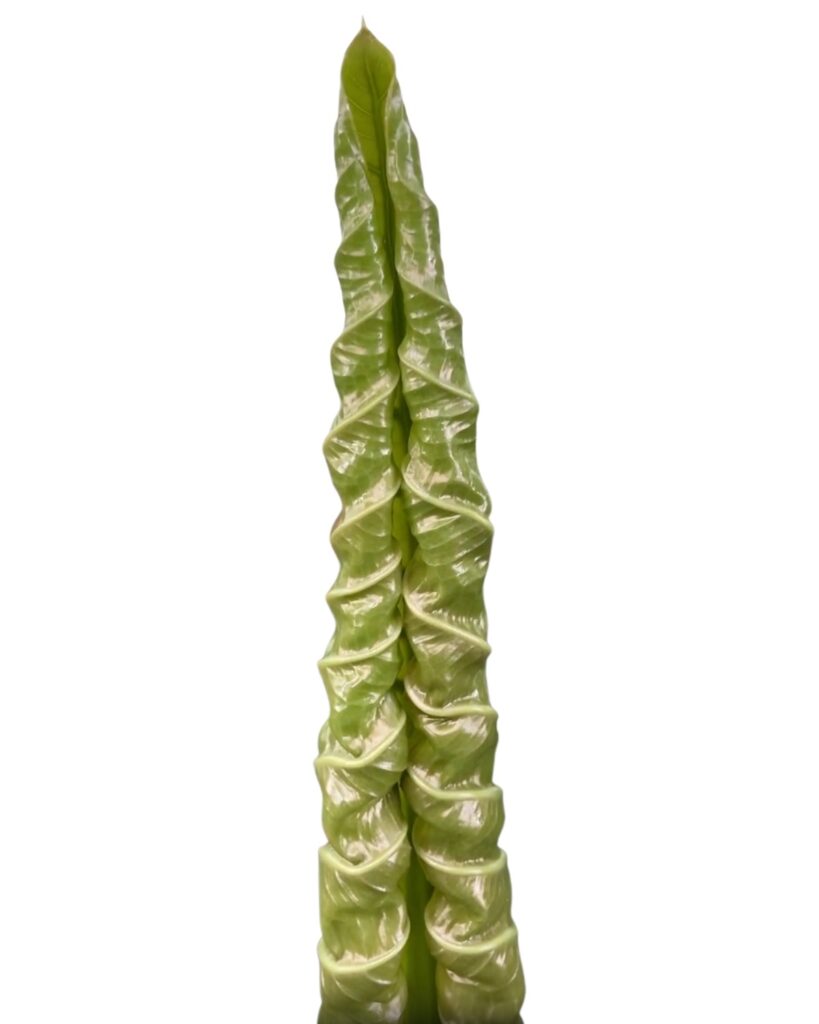
Anthurium schlechtendalii, is another anthurium known for its bird’s nest habit and a part of the Pachyneurium section. Its leaf blades have an involute vernation, meaning the margins roll inward.
It typically has an oblanceolate leaf shape, a lanceolate spathe that’s often purple and reflexed, and a purplish elongated spadix.
While the main subspecies ranges from central Mexico to Nicaragua, another subspecies, A. schlechtendalii ssp. jimenezii, is found on Mexico’s Pacific slope, distinguished by its drier habitat preference, smaller leaves, and an erect spathe.
If you’re really into bird’s nest type, try your luck also tracking down Anthurium Salviniae (huge!), or Anthurium Hucumense. These are very difficult to get.

